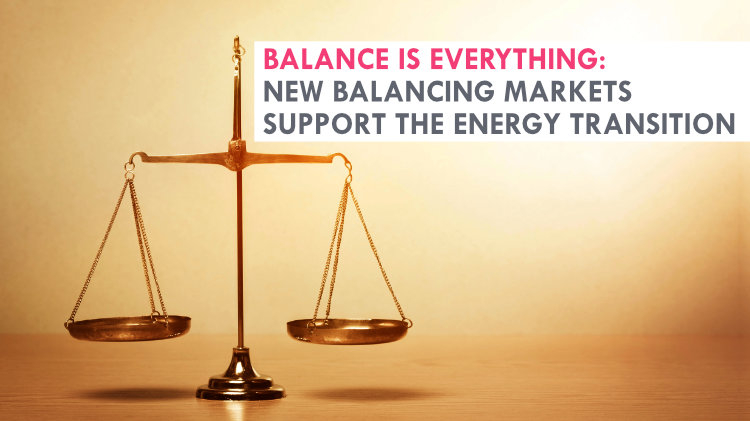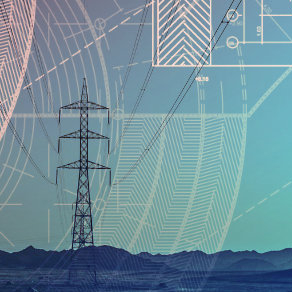
A major disadvantage of an increasing share of renewable energy is that periods of low wind or solar production must be compensated for in order to keep the grid in equilibrium. If this is not successful, frequency deviations and possible outages can be the harmful result. The introduction of new supranational balancing markets such as PICASSO and MARI does not eliminate this risk, but it does create a framework for a higher share of renewable energy than today. This could also be an important pillar to accelerate the energy transition as a whole.
The power market in particular has to continuously match its production with its consumption, as imbalance could end up being costly or even disastrous. The metrics, however, can be measured very accurately and therefore technologies can be developed to counter imbalances immediately and effectively.
Imbalance is costly
Balancing in energy is commonly defined as the actions and processes that are required to match up electricity supply with demand at all times to maintain system frequency within a defined range. Even a minimal deviation leads to fluctuations in the power frequency, which in turn can have a negative impact on electronic devices and electrically powered machines and can even lead to a disastrous blackout.
Imbalances are a constant issue for transmission system operators, who must ensure a continuous and secure supply of electricity, and they also affect energy suppliers, who must pass on the costs to end consumers. These consumers are not only unhappy about the surcharge, but are also left concerned about the risk of a possible local or supraregional blackout. To solve the issue of imbalances, short-term energy trading is capable of saving millions of euros and enables energy providers to precisely fine-tune the supply and demand electricity balance.
Supranational energy balancing
As early as the 1990s, the European Union and its member states embarked on a mission to extend the energy market to cross borders. Long before today's motives of the energy transition and energy-saving efforts, the aim was to create a competitive and open energy market to lower costs for end consumers and increase security of supply. These transnational regulations are also the basis for the more cost-effective and competitive procurement of balancing energy, with the European Commission launching the Electricity Balancing Guideline (EB-GL) with the goal of harmonizing the balancing energy markets in 2017.
To ensure that all electronic devices function consistently and that the grid remains stable, the precise amount of power needed must be supplied at all times. This is managed through a mechanism called control reserve. In the event of short-term deviations that are caused by power plant failures or unexpected changes of load, TSOs can react by buying capacity on the market and, up until now, they were in charge of activating these appropriate reserves from generation or load units in their respective area. Secured access to control reserves is key for the further integration of renewable energy into the European power grid.
With the guideline for the balancing energy market, the European Commission now plans to orient the European balancing energy products to the rough classification of FCR (frequency control reserve), aFRR (automatic frequency restoration reserve) and mFRR (manual frequency restoration reserve), which have already been established in the European member states. Over the years, many countries have developed different systems and processes to restore the desired system frequency, but FCR, aFRR and mFRR are the most common standards. This enables TSOs and also distribution system operators to do cross-border procurement.
New balancing markets
Until now, there has been little flexibility in the purchase of control reserves, so PICASSO and MARI will be the first Europe-wide initiatives for the activation of short-term control reserves. Every participating TSO will be obliged to procure control reserves offered by operators' power plants, which can change their production at short notice and very flexibly. PICASSO and MARI will allow control reserves to be accessed throughout Europe and made available in the timeframes of intraday trading. Different auctions determine which Balancing Service Provider (BSP) holds back capacities and/or delivers the reserve in case of imbalances for each quarter hour. These two initiatives are the reference projects for the establishment of aFRR and mFRR platforms by ENTSO-E, the European Network of Transmission System Operators for Electricity, which is a network representing all TSOs.
PICASSO
The Platform for the International Coordination of Automated Frequency Restoration and Stable System Operation, or PICASSO for short, will enable the optimization of automatic frequency restoration reserves (aFRR) activations, starting with the first TSOs in May 2022. aFRR are basically activated by a power change signal calculated on the base of the frequency deviation sent by the TSO. There are minimum sizes of regulation and a full activation time of only a couple of minutes. aFRR control energy is generally procured only for specific peak hours, which are communicated in advance. Operators can submit bids to the hourly market separately for upward and downward capacities. In addition to the capacity payment, the operator receives a separate compensation based on the amount of reserves actually activated.
MARI
MARI, which has its planned go-live in mid 2022, is a platform designated to harmonize manual frequency restoration reserves (mFRR, also called R3 or tertiary reserve) to help restore grid frequency. This is where the acronym comes from, as MARI is spelled out: Manually Activated Reserves Initiative (unlike PICASSO, which organizes the automatic restoration reserve). mFRR helps to stabilize the frequency of the electricity grid, when longer lasting deviations occur in the power grid that cannot be resolved solely by the other upstream balancing services (FCR or aFRR). In most countries the TSO (Transmission System Operator) is responsible for mFRR procurement and activation. mFRR are fully deployable after 12.5 minutes and for a minimum period of 5 minutes.
Standardizing balancing power
Both initiatives have considerable implications for all market participants. TSOs will be forced to incorporate cross-border optimization into their processes, but they are expected to benefit from a more liquid market with more aFRR and mFRR providers after all. Increased liquidity can be a challenge for providers, as traders have to adapt to it, but it’s an opportunity to exploit the new possibilities of the market. This can result in better prices and a better handling of regional situations, like easily counteracting weather events that affect a large part of the country.
Also with 15 minutes rather than previously one or even several hours, delivery windows for both platforms will be much shorter and bidding will be possible much closer to delivery time (25 minutes, instead of 1 hour). Similar changes already took place in intraday markets, so we know from experience what to expect. There will be greater flexibility for providers and traders, which makes it easier for renewables to participate, as they won’t have to commit to a long period of time and also not far in advance. This is how they can reduce their risk significantly and can be more certain that they can fulfill their commitment.
Smaller trading periods, however, make things more complex for traders, as the quantity of bids to be placed will go way up and they will need to react to more frequent price changes. This is why the downstream balancing energy providers and traders will have to adapt to these resulting changes, new bid characteristics, increased liquidity and increased international competition. There is a clear economic incentive to participate in short-term trading of control reserves, as the total cost of power generation decreases the more cooperating partners in Europe participate. All in all, greater competition promotes innovation and efficiency, and thus lower costs for all.
From 2022 onward, these two new balancing markets with the illustrious names PICASSO and MARI are intended to prevent imbalance peaks in the European energy grids. With these initiatives and an implementation of cross-border services, it is expected for electricity to become cheaper again for all consumers, as it enables the introduction of a higher share of cheap renewable energies.




